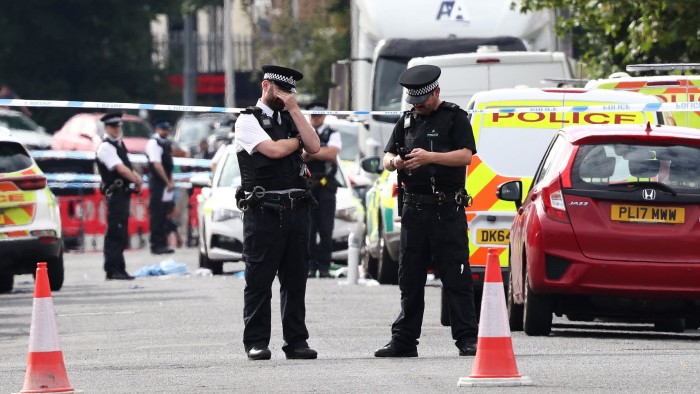Unlock the Editor’s Digest for free
Roula Khalaf, Editor of the FT, selects her favourite stories in this weekly newsletter.
The writer is the UK’s independent reviewer of terrorism legislation
The case of the Southport killer Axel Rudakubana raises urgent questions about how the law should apply to users of extreme violence for its own sake. Various arguments have been made in favour of amending the terrorism definition.
First, it might be an appropriate label because only “terrorism” captures the social revulsion at Rudakubana’s acts of violence. Second, it might help prevention, pulling in the superior resources and capabilities of the UK counter-terrorism apparatus.
Third would be a legal function, possibly unlocking greater investigative powers and widening the net of criminal liability to allow police intervention and prosecution before an attack can occur. For example, a lone actor who takes early steps to a mass slaughter commits an offence — but only if it is defined as terrorism. Each argument merits real consideration but each has drawbacks, quite possibly terminal.
If the present definition of terrorism is thought to be too narrow because it does not apply to extreme violence for its own sake, a new test will be needed to distinguish between it and ordinary crime. The current test — which requires a motive of advancing a political, religious, racial or ideological cause — tackles attempts to change our way of life through violence. Terrorism without subversion is a very different proposition, but the current definition is still wider than it seems. It does apply to new, internet-driven ideologies that justify ultraviolence, even though they may be unfamiliar and therefore harder to spot, such as end-of-days anti-system dogma, and certain variants of Satanism and “incel”-related beliefs.
Sir Keir Starmer this week floated the possibility of a new test: “violence clearly intended to terrorise”. This risks too many false positives, such as domestic violence, unless the intended target is clearly the wider public not the immediate victim. Even this would still catch extortion by criminal gangs and serious hooliganism. The prime minister is, however, right about factoring in desire for notoriety, a major motivator in US school massacres.
As to resources, a wider definition will not automatically focus counter-terror police and MI5 manpower on future Southports. The national security apparatus has major threats to manage, including Isis-K and Russian sabotage. Unless the amendment was very tight, the system could be overwhelmed with dangerous and apparently dangerous individuals, vying for attention as potential terrorists.
Perhaps few would argue with extending investigative powers to avert atrocities: allowing 14-day pre-charge detention in suitable cases, suspicion-less stops at air and seaports, and applying terrorism offences like possession with intent or preparatory acts to violence-obsessed individuals. But doing so would expand the harshest powers of the authorities, and the authorities can make mistakes about human motivation.
What’s more, terrorism legislation does not just apply to violence, so every inciter, encourager or publisher of atrocity-promoting material would become a terrorist, liable to special post-release measures. Complaints are already made about the scope of UK terrorism laws. Although I support the current definition as workable and adaptable, I would be cautious about pushing the law too far.
Possibly the solution lies in borrowing from the tactics of counter-terrorism. Where a “subject of interest” is on the books, police use a range of tactics to disrupt or deter, by prosecuting non-terrorist offending or imposing anti-social behaviour injunctions. Rudakubana’s danger was fizzing off him, but after he exited Prevent, the deradicalisation programme designed to divert potential extremists away from violence, there was no one to manage this risk. By which I don’t mean longer-term interventions such as therapy or medical help and family support, but immediate public protection by law enforcement.
This is not about definitions, it’s an organisational issue and I think a major one. It suggests the need for a wholly new capability to deal with those motivated by non-instrumental extreme violence. Operating at regional and national level, it would sit alongside counter-terrorism and serious and organised crime but separate from both.
Then there is Prevent. Invented with al-Qaeda in mind, the multi-agency programme has uneasily juggled proto-terrorists and violence-lovers for years. It has been stretched to maximise police contact with school massacre obsessives and young people without any single identifiable terrorist motivation.
Even if non-terrorist violence is kept within Prevent, there is a serious need for humility and imagination in the face of internet influence. Children in their bedrooms are tempted to violence by images, peer-to-peer chat and dark transgressive humour absorbed over hours and hours online. Today’s reality makes the traditional model of deradicalisation years out of date.



